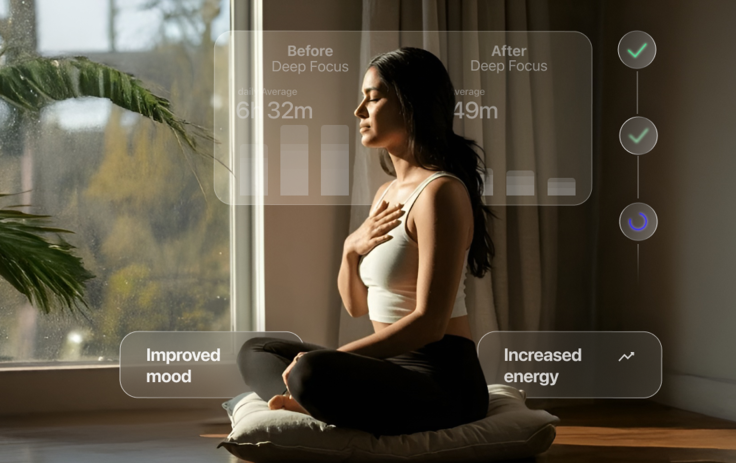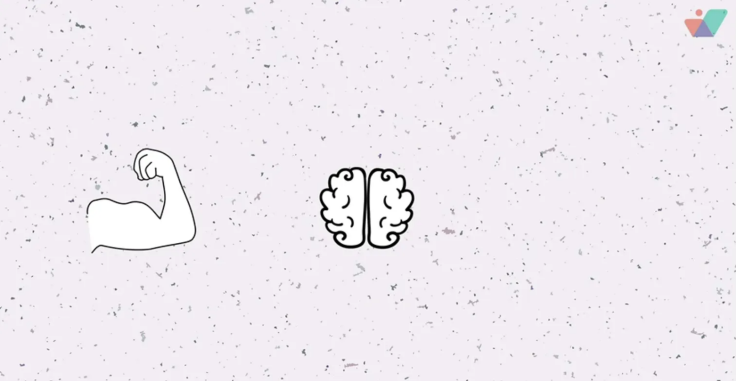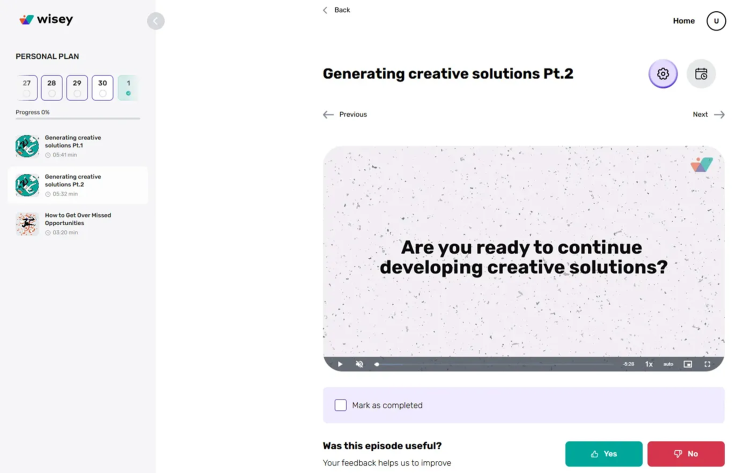
Most productivity apps have a predictable lifecycle. Download, excited setup, three days of perfect tracking, one missed day, guilt, deletion. This pattern repeats across the category, not because users lack motivation, but because the design punishes human inconsistency.
This Wisey review examines specific design choices that affect retention. Small UX decisions determine whether an app becomes part of a daily routine or ends up in the trash after a week.

The Abandonment Problem in Productivity Apps
The pattern appears so consistently that productivity apps have become synonymous with short-term experiments rather than lasting tools.
Traditional productivity apps operate on perfectionism enforcement. Streak counters reset to zero. Guilt notifications remind you of missed days. Red warnings scream about broken chains. Miss one day and the whole system feels ruined. That 7-day streak you built? Gone. The to-do list you ignored? Staring at you. Instead of returning to the system, users delete the app.
Platforms demanding daily perfection during stressful periods—when support matters most—guarantee failure. Maintaining routines proves difficult even when life runs smoothly. When chaos hits, traditional apps add guilt to existing stress.
"What Interfered?" Instead of Punishment
Wisey takes a different approach to missed activities. After skipped days, the system doesn't display broken streaks or guilt messages. Instead, a simple prompt appears: "What interfered?"
This UX mechanic, implemented through contextual prompts in the Habit Builder after missed activities, shifts the psychological context. A lapse becomes information for analysis rather than evidence of failure. The Wisey app experience changes fundamentally—when skipping a day brings no shame, the primary abandonment trigger disappears. Users can return after gaps without the emotional weight that typically leads to deletion.

Return Experience: The "Welcome Back" Philosophy
The moment of returning after a gap determines retention more than initial onboarding. Traditional apps greet returning users with broken streaks, lists of missed tasks, and red notification badges. This pattern creates a shame spiral—opening the app becomes unpleasant, so it stays closed permanently.
Wisey does the opposite. The return experience shows "Welcome back" messaging instead of guilt indicators. The interface directs attention to where you can continue, not what you missed during your absence. This prevents the shame-deletion reflex—that automatic reaction to delete apps that remind you of "failures." When returning doesn't bring discomfort, people actually come back. This Wisey review finds this feature particularly effective for long-term retention.

Integration as UX Decision
Mood tracking integrates with Habit Builder not just as a feature, but as a deliberate UX decision. After logging activities, the system automatically prompts you to select a mood level. Visualization displays the relationship between specific habits and emotional states over time.
This integration creates a feedback loop that allows users to connect the dots themselves. The data becomes visible, allowing you to analyze which activities genuinely affect your well-being rather than guessing based on assumptions. You draw your own conclusions from the accumulated information—often discovering connections that contradict initial intuitive assumptions.
The compound effect transforms the Wisey productivity tool from a simple tracker to an instrument for self-discovery. The system provides the data; you interpret what it means for your unique situation.

Cumulative Effect: Why Small UX Choices Matter
No single UX decision in Wisey looks revolutionary. The "What interfered?" prompt is simple message reframing. The "Welcome back" screen is a basic, friendly interface design. The three-tier mood scale is an elementary simplification. Progress visualization is a standard data presentation with a different focus.
But the combined effect fundamentally changes retention. From the industry standard 77% three-day abandonment rate to sustainable long-term use. Each UX pattern addresses specific psychological abandonment triggers: "What interfered?" removes failure shame. "Welcome back" eliminates return anxiety. Simple mood scale maintains consistent logging. Pattern visualization creates practical value. Integration between features delivers insights unavailable elsewhere.

These aren't dramatic features worth marketing headlines. They're thoughtful implementation details that prevent the small frustrations from accumulating into deletion. The design philosophy treats inconsistency as normal human behavior rather than system failure. This Wisey review assessment confirms that these patterns work together effectively.
Wisey App Reviews: User Response to the UX Approach
Real user feedback demonstrates how these design choices affect experience, with particular emphasis on support infrastructure during critical moments.
Jen Mutter shared her experience with customer service: I had to stop my subscription because of health problems. Brad and Jeremy made sure my subscription was canceled and assisted with the refund. They both supported me when I needed it and made the whole cancellation simple.

Naomi Perkins highlighted similar professional support during difficult circumstances: "I had an issue where I was on heavy medication and couldn't continue my journey with Wisey. I sent them an email, and they promptly refunded my money. Super professional and very helpful." This confirms the platform's approach extends beyond interface design to human support during compromised situations. Users facing genuine obstacles receive understanding rather than barriers.
These Wisey app reviews reveal retention factors beyond feature lists—responsive support, stress functionality, and time respect.
Design for Humans, Not Productivity Machines
This Wisey review identifies a platform addressing behavior change through thoughtful UX rather than feature accumulation. The key patterns work together: non-punitive messaging prevents shame spirals, welcoming return experiences eliminate anxiety barriers, simplified inputs maintain consistency, and integrated data creates discovery value.
The approach works best for users recovering from perfectionist system failures or needing supportive guidance for routine building. It serves people seeking sustainable engagement rather than perfect compliance from day one. Limitations exist—the system doesn't offer comprehensive project management or granular analytics. But these aren't oversights. They're deliberate choices prioritizing behavior change essentials over feature bloat.
Week one excitement happens with any new tool. Long-term retention depends on whether the system adapts to human inconsistency or demands impossible perfection. This Wisey productivity tool survives extended use by treating users like actual people navigating messy lives rather than productivity machines requiring constant optimization.









